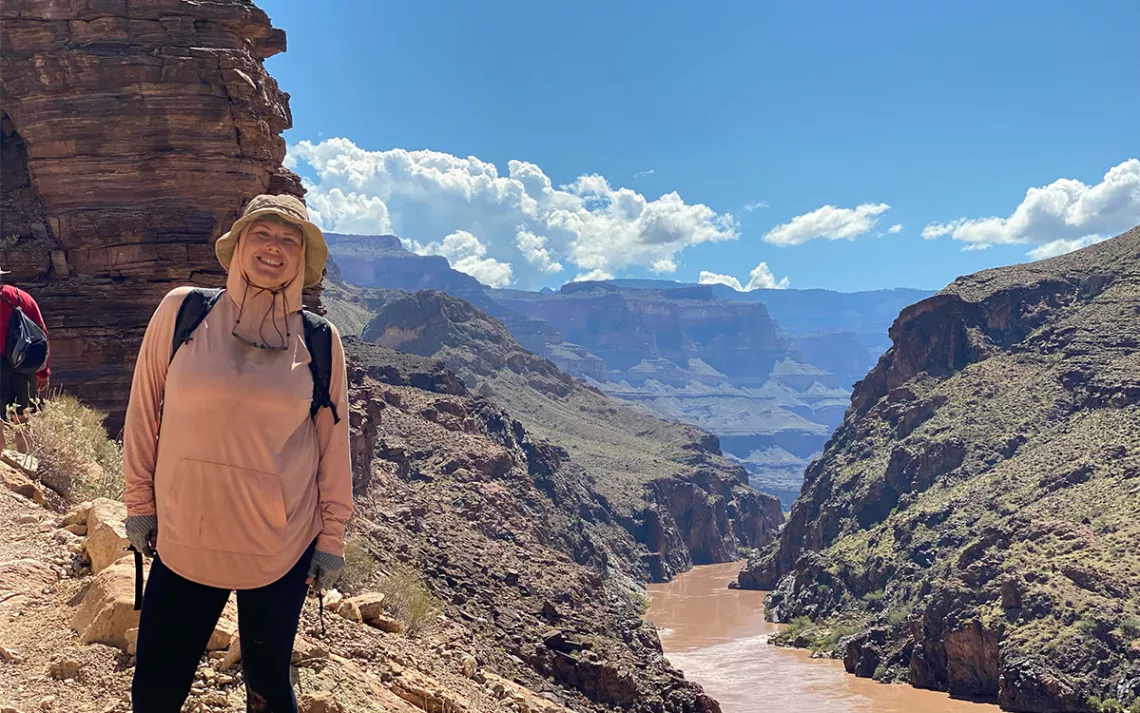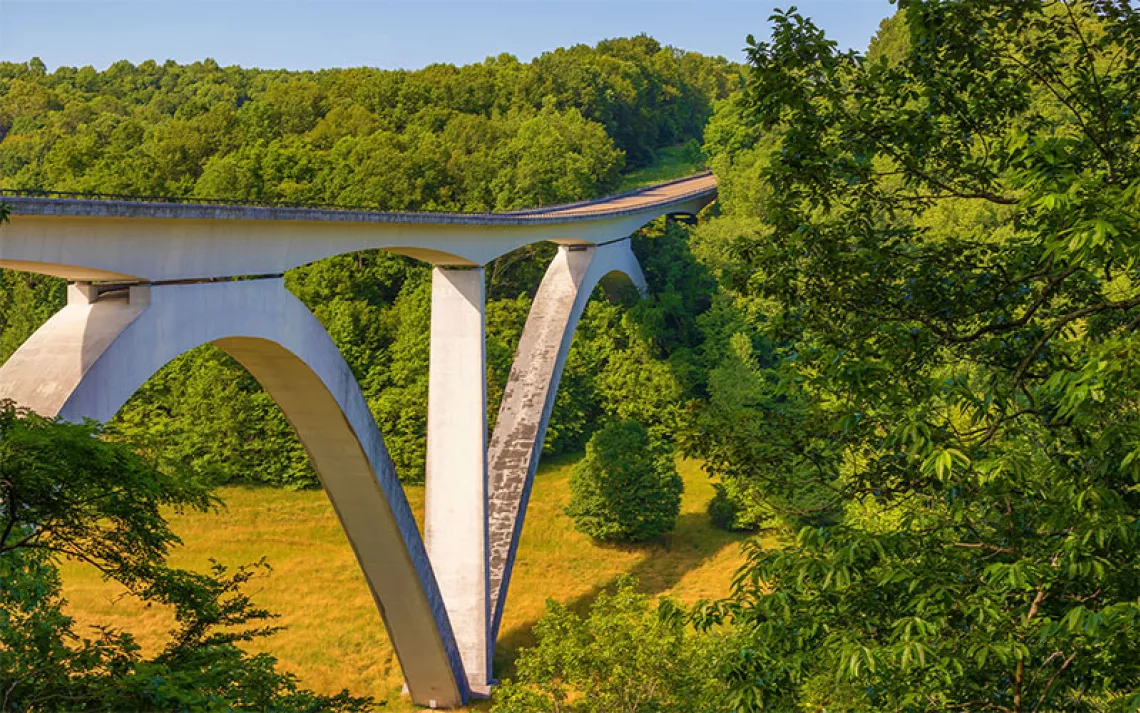How to Hike Safely in the Heat
Temperatures are rising, so protect yourself with these extra precautions

Summer brings to mind camping, fishing, hiking, and pretty much all things fun. But with the steadily rising temperatures and heat waves, it’s important to take proper precautions when heading outdoors. And while many of us grew up not experiencing peak summer heat until late July or August, nearly 100 million Americans were under temperature advisories by June.
The World Health Organization notes that heat stress is the leading cause of weather-related deaths, and it can exacerbate underlying illnesses such as diabetes, asthma, and cardiovascular disease. Heat is even more dangerous when accompanied by strenuous activity, as evidenced by a couple rescued while hiking in California recently. At the time of rescue, they were severely dehydrated, and one of them appeared to be unconscious, described by first responders as having a “severe condition” before being helicopter transported to the hospital.
Though extra precautions are required when hiking in the heat, it is still possible to get out and enjoy some terrific trekking this summer. Here’s what you need to know about safely hiking in the heat.
Safety in numbers and notifications
As the saying goes, there is safety in numbers, and according to Harvard Health Publishing, traveling in pairs is key when hiking in the heat. If you do head out hiking alone, they advise informing someone who is not in your party (say, a friend or family member who is home or at work) both of your anticipated route and when you expect to return.
Many national parks, state parks, and wilderness areas have sign-in books that are often located near trailheads. Signing in is optional, but it’s very smart and only takes a few seconds. The log usually requests your name, what hike you plan to do, and what time you’re starting it. Should you become lost, hurt, or disoriented while hiking, rangers may be able to find you quicker if they saw that you signed in for a hike but never signed out.
Considering humidity
Humidity is just as much a factor as the heat itself, so when looking at the weather forecast, consider both. When hiking in dry heat, your body can cool itself down a bit by sweating. However, in a humid area, sweat evaporates more slowly. When this happens, you sweat less and your body cannot cool itself as easily as it can in dry heat. So, even if you’re accustomed to hiking in dry 90-degree weather, you still may have a hard time hiking in 80-degree weather if it’s very humid.

Planning and timing your hike
Tara Alcantar, of Homegrown MTB (a mountain biking and trail guiding company in southern Arizona) says that travelers often underestimate how quickly heat illness can occur, or worse, turn to heat stroke. “With little to no shade and water in the desert when hiking, there’s no escape from sun exposure, which can zap your energy and cause symptoms such as nausea, exhaustion, muscle cramps, and even disorientation.”

Sign up to receive Sierra News & Views
Get articles like this one sent directly to your inbox weekly.
With this action you affirm you want to receive Sierra Club communications and may vote on policy designated by the Sierra Club Board.
Alcantar suggests that when hiking in the heat, opt for a route you’re familiar with, as “many hikers get turned around and end up lost with more time in the sun, which leads to exhaustion.” She advises planning your hikes early in the morning or late in the evening to avoid the peak mid-day heat. And regardless of the time of day and the route you had planned, she suggests checking local weather forecasts before heading out and making prudent choices about when and where to recreate. If it will be hotter than expected, or if a storm may develop, it would be best to switch or postpone your trek.
Hydration
Hiking guide JoAnn Lantz, who grew up in New York and now leads trekking tours in Italy with the hiking-focused tour company Wilderness Travel, stresses the importance of proper hydration, which goes beyond just water. She describes how one of the guests on a hiking tour she led fell ill simply because he didn’t hydrate properly. “He became very sick due to the imbalance of minerals in his body, as he wasn't getting enough water, salts, or minerals.”
The solution is not as simple as many people think. Lantz explains that water alone is insufficient. “We lose salts and minerals like potassium and magnesium in our sweat, so it is important to keep our body in balance by adding these back through proper hydration.”
Mass-market electrolyte drinks like Gatorade tend to be the best-known source of electrolytes, but they often carry a high amount of sugar (as much as a soda). These are far from the only way to get these essential nutrients into your body while hiking. Coconut water and pickle juice also work, as do electrolyte tabs and powders that can be added to water in your reusable bottle. Some hiking backpack water reservoirs (also known as “bladders”) can also accommodate electrolyte tabs and powders. These electrolyte mixtures tend to be more natural than ready-made drinks (which often have artificial colors and flavors), and using them is cheaper and far more environmentally conscious than buying bottled drinks for every hot hike.
Alcantar adds an additional pro tip: Freeze a homemade electrolyte mix overnight and bring it with you on a hot day’s adventure. “The heat will soften the frozen liquid and turn it into a delightful slushie that is sure to reinvigorate a hot and tired body.”
What to wear and pack
According to Lantz, it’s extremely important to pack gear that will help you cope with high heat, which could include a light long-sleeved shirt, wide-brimmed hat, and sunscreen. The importance of wearing long-sleeved clothing is that it helps to protect your skin from the sun. Additionally, if the clothing is made from a very lightweight, breathable fabric, it can also help your skin feel cooler than if you were wearing a short-sleeved shirt, which would directly expose your skin to the sun.
Neck buffs and detachable arm sleeves can also help protect skin in the sun and be easily removed when you’re in the shade. These can also be dipped in water, which can help cool you down further when hiking. I’ve also seen people on hikes wrapping ice cubes into a neck buff then letting the cool water slowly drip down their head and neck while hiking.
Lantz also suggests a very European solution to sunny hiking: an umbrella or sun parasol. “You will be surprised by how effective it is and how much cooler you feel under the shade it creates, especially in high heat that is not accompanied by humidity.”
 The Magazine of The Sierra Club
The Magazine of The Sierra Club



